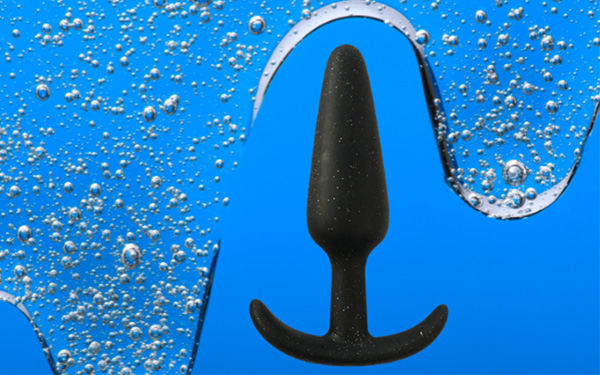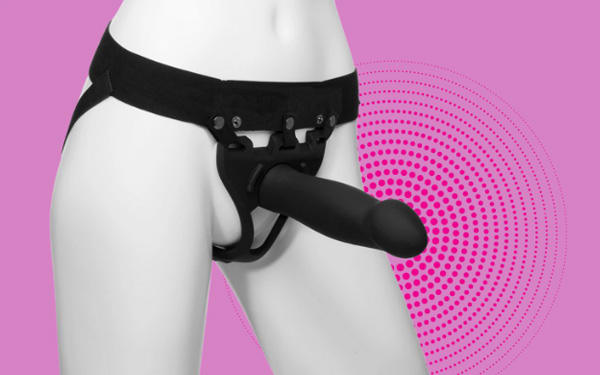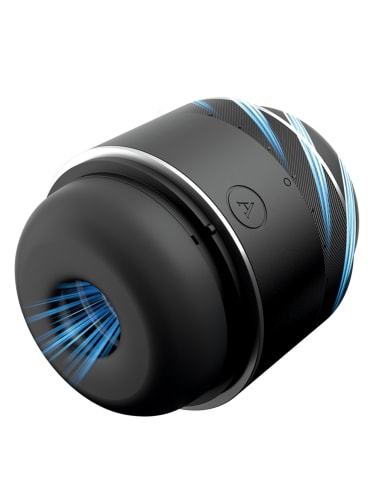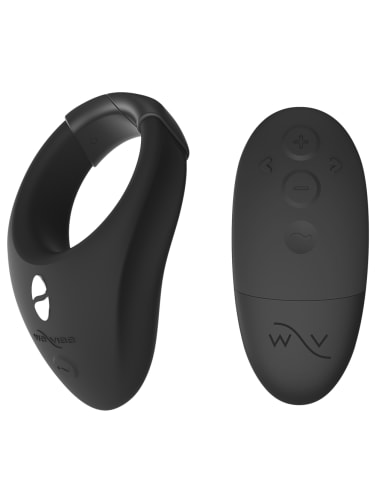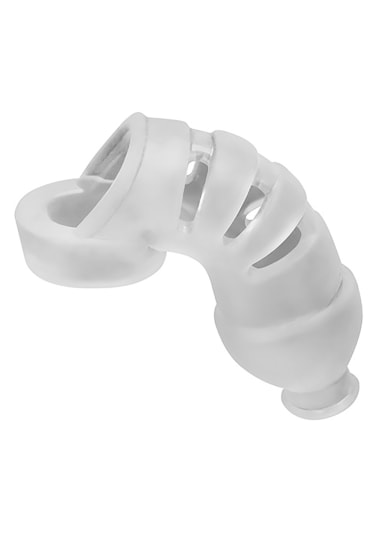What Is Edging?

The sexual response cycle:
The key to edging is gaining greater recognition of your own orgasm and the shape it takes as it builds – a good way to look at this is through the first stages of the sexual response cycle. These specific responses may not reflect your experience exactly, but you can use them as a basis and remember that the most important part of this practice is knowledge of your own body.
The sexual response cycle has four stages: arousal, plateau, orgasm, and resolution.
1) Arousal / Excitement – the anticipation phase, the moment when sexual and physical desire kicks in. During the arousal stage, our body responds through the release of dopamine and adrenaline, as well as increased heart rate and blood pressure (this is what will cause erections in the penis and clitoris), vaginal self-lubrication, hardened nipples, dilation of the pupils, and vasocongestion of the skin – aka the sex flush that can appear, most commonly across the face and chest.
2) Plateau – this is the one to focus on to when it comes to edging, as this is the phase right before orgasm - aka reaching the edge of the plateau before hitting the peak of climax. Despite the name plateau feeling like it would imply a stagnancy – like a flat geographical plateau – there’s actually a lot of build happening during this stage. During plateau, the responses from the arousal / excitement phase are continued and intensified – and where those moments before orgasm become recognizable, some examples being heightened sensitivity, swelling of the vulva, slight elevation of the testicles towards the body, increased lubrication and the appearance of pre-ejaculate fluids, and muscle tension and spasm. (If you are a sheet-clencher, this is probably where it happens! It's evidence your muscle tension is increasing.)
That’s where you want to zero in on your signs that you’ve reached the top of that climb: is it when your breathing gets really heavy? When your toes curl and your legs shake? When your moans of pleasure become shouts? Pay attention to what your whole body does right before you come, not just your genitals.
3) Orgasm – the moment where you’ve passed that edge (and the period where you can edge) and you’re soaring over the peak that plateau lead you to. The experience of orgasm can be so different from person to person, but it can also feel totally different from one orgasm to the next – especially if you’re reaching it in a new way. Commonly, orgasm has physical responses including muscular contractions throughout the body - especially in the pelvic region which includes the vaginal canal, base of the penis, anus, and pelvic floor - followed by a release of sexual and physical tension which can result in ejaculation.
BTW- Sexual play can still feel incredible without orgasm – even if you don’t reach your O, you can still thoroughly enjoy all those sensations that happen in the arousal and plateau stages!
4) Resolution – the stage where the body returns to the state it was in before sexual response occurred – or where the cycle can start over. Resolution will happen at the end of a sexual encounter whether or not orgasm was reached. For folks with penises, they can lose their erection during the resolution phase and experience what is called the refractory period: the period of time that it takes the body to get back to the state of physical arousal where the erection can return (if you want it to). While folks with vulvas don’t experience as noticeable of a refractory period – the experience of muscle relaxation and post-O bliss can happen for anyone and have other effects that may keep us from diving back in, like getting tired or feeling any soreness from physical exertion that we may not have recognized in the heightened state of arousal. Remember, these sensations and responses can be totally different orgasm-to-orgasm.
Why do people like edging?
There’s a lot of reasons why someone may want to try edging – these are a few of the most popular:
Intensify sensation:
Because of the anticipation from feeling that orgasm is juuuust out of reach with edging, many folks will have a stronger orgasm – both because of the physical build and the mental as well. For many, the longer it takes to go through the sexual response cycle, the greater the build-up can be, and this is a great reason to explore edging.
Orgasm training:
Many folks will use the act of edging as a sort of “stamina training” – becoming more aware of their body’s tells for when they are about to come, and practicing how to withhold that release, so that they can last longer in bed. When it comes to folks with penises, this practice is nothing new – in fact, a paper published in 1956 by Urologist James Semans in the Journal of Sexual Medicine introduced the “stop-start method” – aka, you guessed it, edging - to help prolong erections by holding off ejaculation.
It’s important to note here that this method doesn’t work for everyone, and just like any other stamina-building routine that you would see in your typical workout routines, it takes training, practice, and patience – and even then, our bodies fluctuate so much on a day-to-day basis that we can never guarantee our sexual reactions one day will be the same as the next.
And just to spell it out, here’s some super helpful advice from Sexologist Dr. Carol Queen: “There are lots of great reasons to last longer, but please don't buy into the idea that extending the duration of intercourse is the key to a partner's orgasm. While for some people that may be the case, for others, having intercourse for a long time will not help them come. Ensuring high arousal before penetration, and [incorporating other forms of stimulation like] continuing clitoral stimulation are probably the most relevant skills to learn.”
Learning more about our O:
Because the practice of edging requires the recognition of the signs that we are reaching orgasm to halt it before it happens, after a while we can become more attuned to our body – both physically and mentally. Learning what signals our bodies give when we are close to orgasm can help us in edging, but it can also allow us to find new ways to experience orgasm and build confidence around this awareness of our bodies and how we work. This mindfulness can even come into play with our partners – ask them what their orgasm build feels and looks like, and learn their signs as well!
Playing with power:
Edging doesn’t have to be a solo sport. The phrase “orgasm denial” comes from the BDSM term for edging, in which a partner is taking control of another partner’s orgasm. This can happen physically, with the controlling partner (the Dominant) using stimulation and/or touch to get the person being edged (the submissive) right to that cusp and then stopping - often abruptly and without notice - before they can finish.
If the partner holding control of the orgasm in the scene doesn’t recognize the tell-tale signs that the person being edged is reaching the end of their plateau, it can definitely be helpful to add some verbal communication into this play. Physical cues might not be so easy to notice, especially if you’re edging with a new partner or when there’s a lot of arousal response happening throughout – whereas “I’m so close!” or “I’m about to come!” are explicit signals that climax is close. That communication can go both ways as well – it can be super hot for the Dom(me) to incorporate verbal commands letting the sub know when they do or don’t have “permission” to climax.
Let’s stress here that any D/s dynamics, roleplay, etc – including partnered edging - should ALWAYS be negotiated beforehand since full consent from everyone involved is key to the experience. Checking in and safewords are vital, as consent can be retracted by anyone at any time.
If you want to learn more about proper consent practices, click here for our blog on scene negotiation, and here for our blog about consent and communication.
Toys for edging:
Bringing toys into the game can rev things up and make edging all the more stimulating.
Vibrators:
Using a vibrator to focus on hot-spots like the frenulum (that’s a super sensitive spot on the underside of the penis right where the head meets the shaft) or against the tip of the clitoris will add a new sensation, and using a powerful toy or a pinpoint shape like a bullet vibrator will intensify that feeling and be a lot more obvious when it’s taken away from the body in that moment of restraint or denial.
Try Fun Factory Manta or We-Vibe Tango X
You can also level up the fantasy of control by getting a remote or app-controlled toy and handing it to an edging partner so they can play with the different settings to build up the intensity of the vibrations then take it back down with just the tap of your smartphone or a control button.
Try We-Vibe Bond or We-Vibe Moxie+ (or save on both with the special edition Tease Us set)
Strokers:
Give your hand a hand with a masturbation sleeve. There are so many designs with textures that are totally unique from what a body part can feel like, and so they can take you down a new path of plateau to explore what your “right there” feels like in a new and exciting way.
Try Tenga Spinner Stroker or Arcwave Voy Stroker - and don’t forget the lube.
Chastity devices:
Chastity devices – such as cock cages or chastity belts – are wearable items that prevent direct stimulation of the genitals through touch by creating a barrier, commonly made of a hard material like plastic or metal, or a thick layer of material like silicone or leather. Penis chastity devices can prevent full erections – adding to play that involves the inability to reach the orgasm you may be used to. Chastity devices can be great to incorporate into that power play we mentioned above – just make sure that if you choose a locking cage, the key is left fully accessible.
Try Lockdown Chastity Silicone Toy or Netted Chastity Jock – and check out the Toybag Guide to Chastity Play for more ways to explore chastity play.
How many times can you get to the edge without having an orgasm?
This is completely up to you and your body – mentally, emotionally, and physically. If you’re getting to a point where it’s uncomfortable, stop and allow yourself to come or to stop playing. If you’re playing with a partner, communicate and let them know when you’re ready and want to finish.
If you don’t finish – that’s okay. There’s no risk to not getting there completely, there’s not going to be permanent backup, and you aren’t going to explode. For folks with penises, “blue balls” are a real thing (it’s slang for epididymal hypertension) – but the condition is very short-lived, and there’s no danger to it other than possibly feeling some scrotal pressure, sexual frustration, and in some cases – yes – a temporary faint blue tint to the testes. If you have symptoms like this that feel severe or last, it’s not due to lack of ejaculation / blue balls, but something else like injury or testicular torsion – and you should contact your doctor.
Next time you’re playing alone or with a partner, don’t be afraid to explore your boundaries with some orgasm restraint play - and maybe even find a way to extend your pleasure or discover a new kink.
Happy edging!


